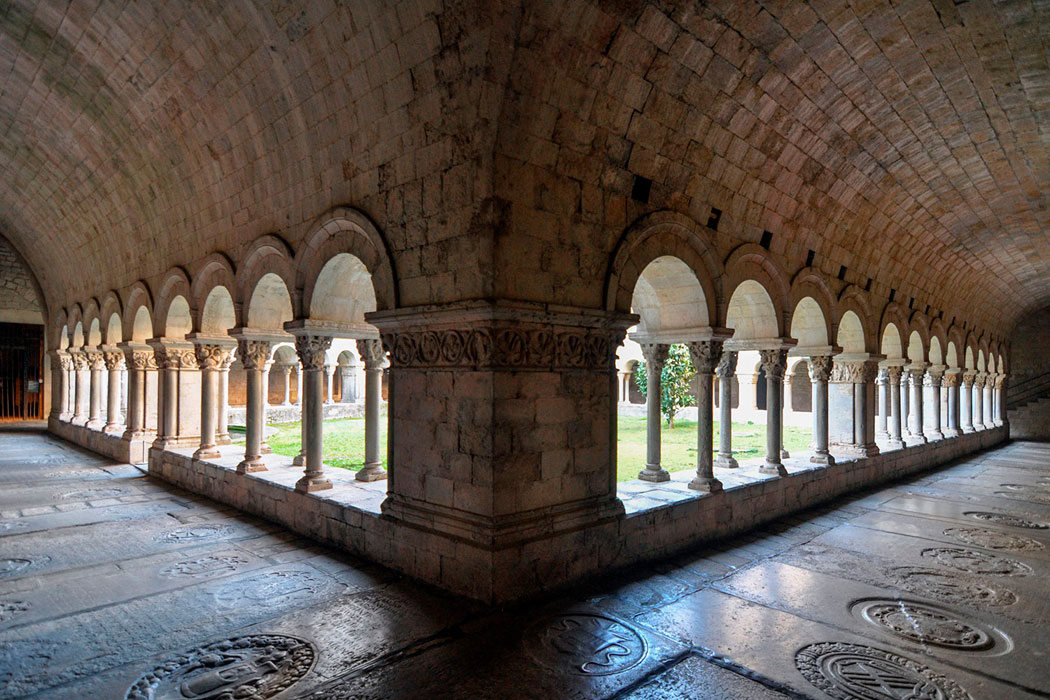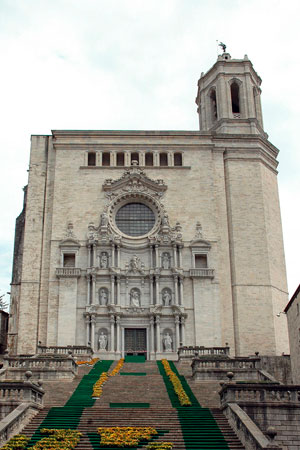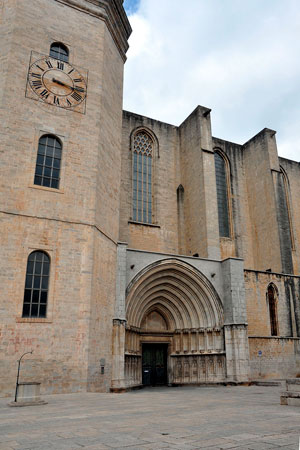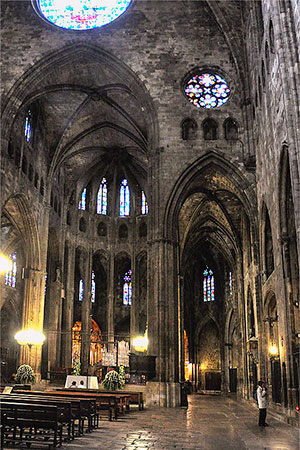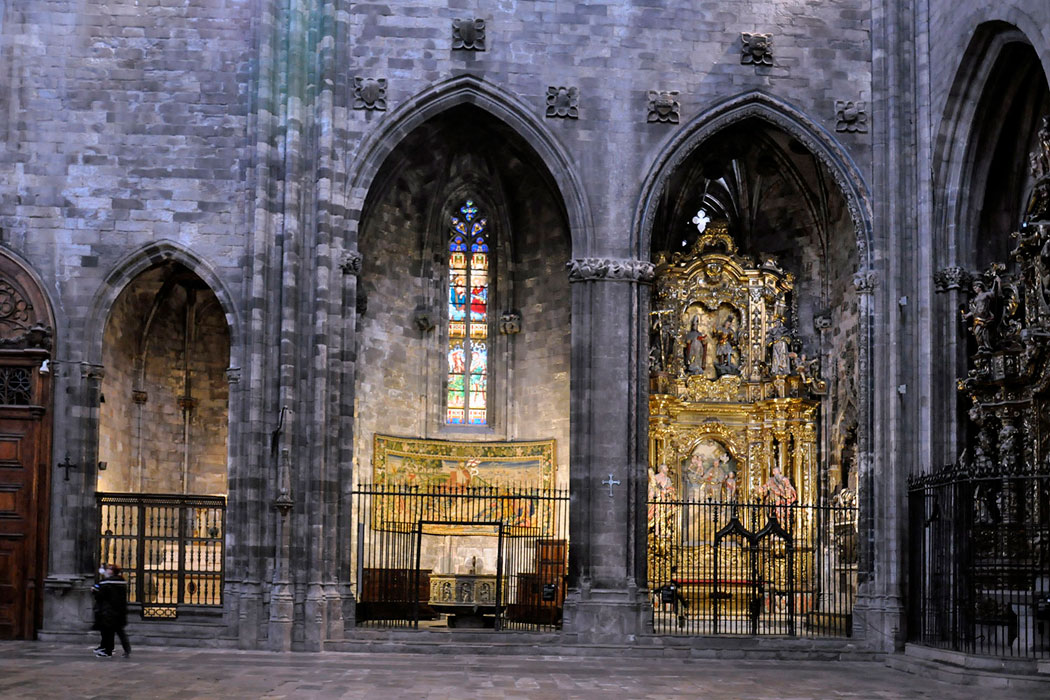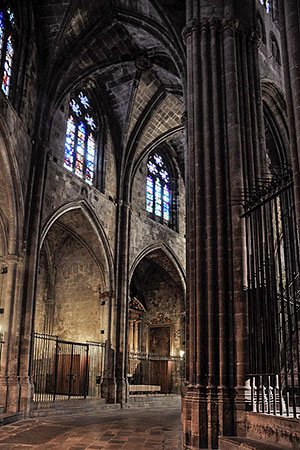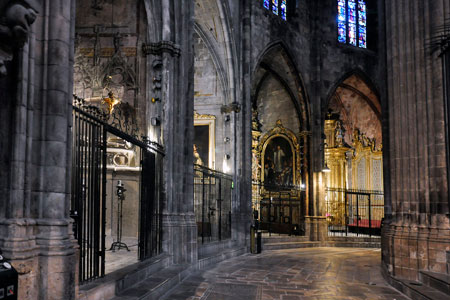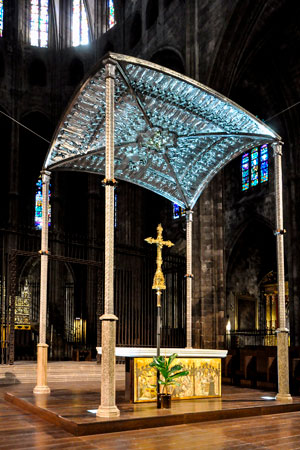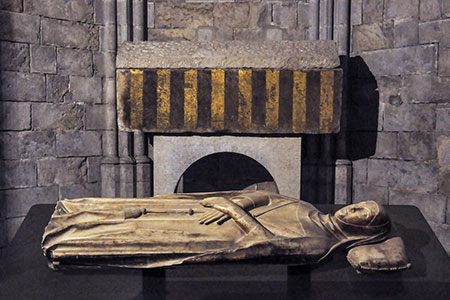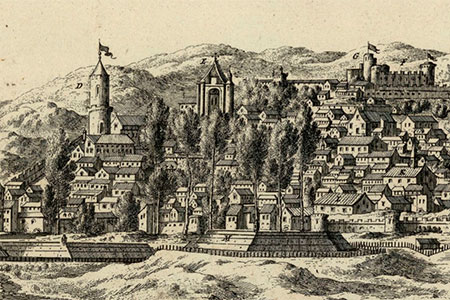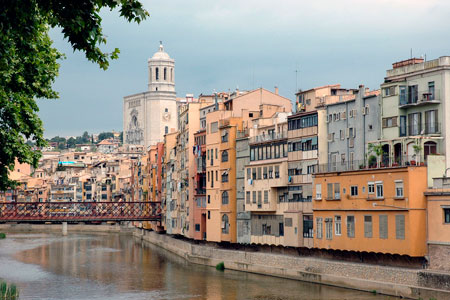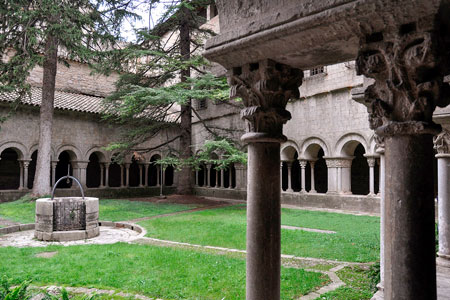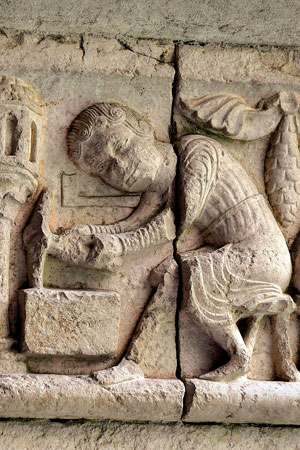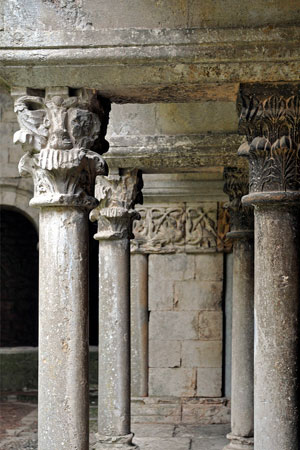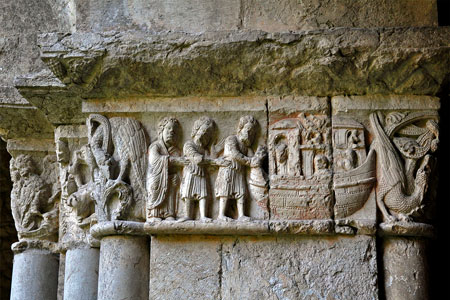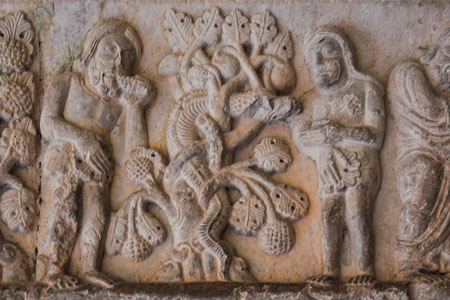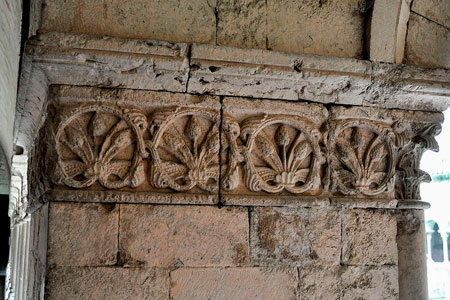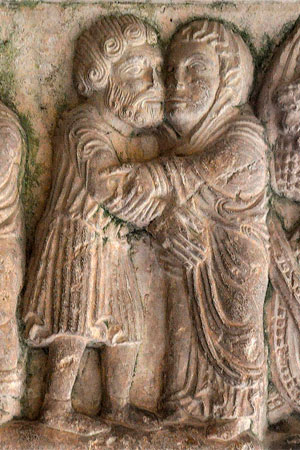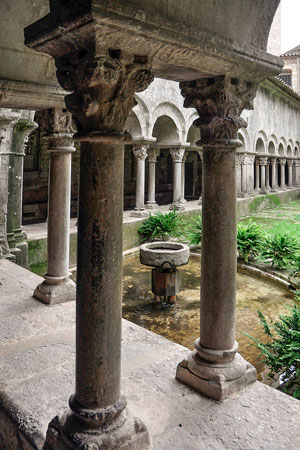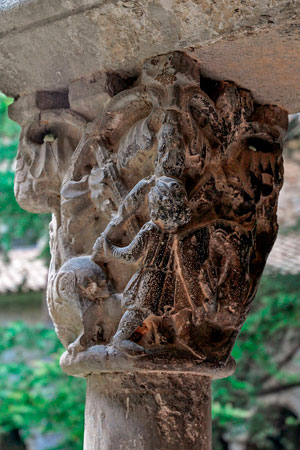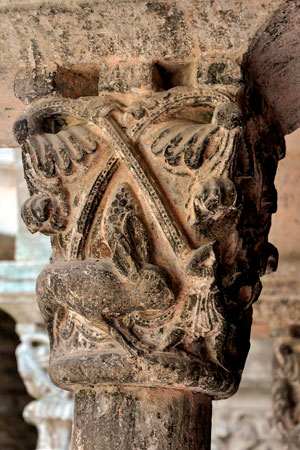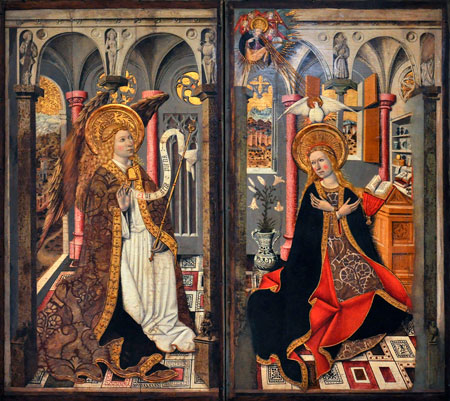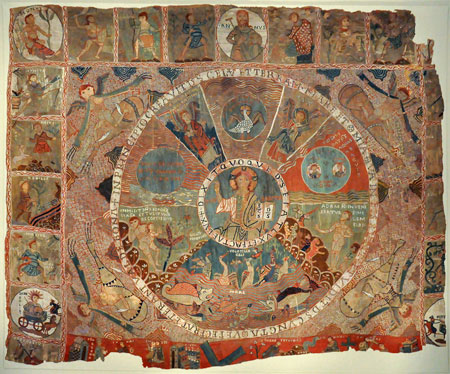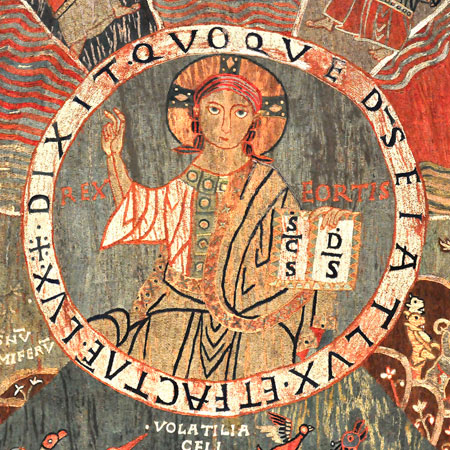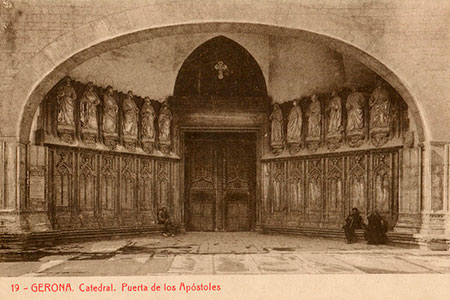Canonry of the cathedral of Santa Maria de Girona
Sanctae Mariae sedis Gerundae / Catedral de Girona
(Girona, Gironès)
There is news of the existence of a bishopric in Girona at the time of Pope Innocent I (401-417), we also know that at that time the bishop of this city took part in a council in Toledo. In 516 there is news of Frontinià, the first known bishop of this diocese, which was very possibly located in Sant Feliu. The great changes produced under the influence of Islam (715-785) profoundly affected this institution.
During the Saracen occupation, the site where the cathedral now stands was used as a mosque, and it is also believed that in the time of Charlemagne, when the city was recovered, the bishopric was restored, along with the canonical community that accompanied it. Although there are indications of its existence from much earlier (817, 858...), it is not until 882 that there is certain news of a canonry in the see of Girona, when it was restructured and endowed by Bishop Teuter. This canonry was closely linked to that of Sant Feliu, and it is even considered that it had its seat in that church, so that it would serve the two communities, the canonry of Sant Feliu, of Visigothic origin, and the new one of Santa Maria, promoted by the new Carolingian power, following the rule of Aachen.
In 1015 the bishop of Girona, to finance the restoration of the cathedral, sold the parish of Sant Daniel, the origin of the nearby monastery of the same name, to the counts of Barcelona, Ramon Borrell and Ermessenda. But in the end, instead of restoring the building, it was decided to build a new one, and this new cathedral was consecrated in 1038. When the Romanesque cathedral was built, the buildings to be occupied by the canonical community were also constructed. From 1312, that building was to be replaced by the present Gothic edifice. The new cathedral was to have three naves, and the chancel was built according to this plan.
In the second half of the 14th century, the project was modified, and it was finally decided to continue the work with a single nave, which made it easier to continue using the Romanesque cathedral while the Gothic vault was being erected. The meetings and consultations with technicians of the time to assess the project and the construction system to be followed are known. The Romanesque bell tower, known as the Tower of Charlemagne, was not demolished and remained as a buttress for the new building. The most important and oldest architectural elements of the cathedral complex are the bell tower and the cloister; there are also some old buildings forming part of the canons' quarters, as well as other furnishings.
The bulk of the work on the church dates from the Gothic period, although its construction lasted from the 14th century (chancel) to the 16th century, and the work was completed in 1604. To the south of the church is the door of the Apostles, built in the second half of the 14th century and left unfinished; unfortunately, during the Spanish Civil War, it lost its sculptural decoration and was later restored with little success. The construction of the main façade began around 1680, but it was Pere Costa who gave it a definitive boost in the 1730s; the images that completed it were added in 1959.
- FREIXAS CAMPS, Pere (2003-2003). La Catedral de Girona. Art gòtic a Catalunya. Arquitectura I i II. Catedrals, monestirs... Barcelona: Enciclopèdia Catalana
- LORÉS, Immaculada (1990). Escultura gironina del cercle del claustre de la seu de Girona: alguns fragments de la catedral i del Museu d'Art. Estudi General, núm. 10
- LORÉS, Immaculada (1994). Aspectes relatius a la construcció del claustre de la catedral de Girona. Annals de l'Institut d'Estudis Gironins, vol. XXXIII
- LORÉS, Immaculada (1997). Aportacions a la iconografia del Gènesi del claustre de la catedral de Girona. El cicle d'Adam i Eva. Annals de l'Institut d'Estudis Gironins, núm. 38, 1996
- MERINO, Antolín; DE LA CANAL, José (1819-1826). España Sagrada. T. 43 i 44. Madrid: Collado
- NADAL FARRERAS, Joaquim (2002). La Catedral de Girona. Barcelona: Lunwerg
- NOLLA, Josep M. PALAHÍ, Lluís (2010). Girona. L’arqueologia; eina per la restitució urbanística. Del forum a la catedral. Arqueologia, patrimonio y desarrollo urbano
- PALOL I SALELLAS, Pere de (1980). El "Tapís de la Creació" de la catedral de Girona, i el Beat de Torí. Problemes de cronologia. Annals de l'Institut d'Estudis Gironins, núm. 25
- ROURA i GUÏBAS, Gabriel (1992). Entorn de la fundació de la Canònica de Girona. Quadern de treball, núm. 7
- ROURA, Gabriel; SANZ, Antoni; PLADEVALL, Antoni (1991). La Catedral (o Santa Maria de Girona). Catalunya romànica. Vol. V. El Gironès, la Selva, el Pla de l’Estany. Barcelona: Enciclopèdia Catalana
- SUREDA JUBANY, Marc (2008). Els precedents de la Catedral de Santa Maria de Girona. De la plaça religiosa del fòrum romà al conjunt arquitectònic de la seu romànica (ss. I aC - XIV dC). Tesi doctoral. Universitat de Girona
